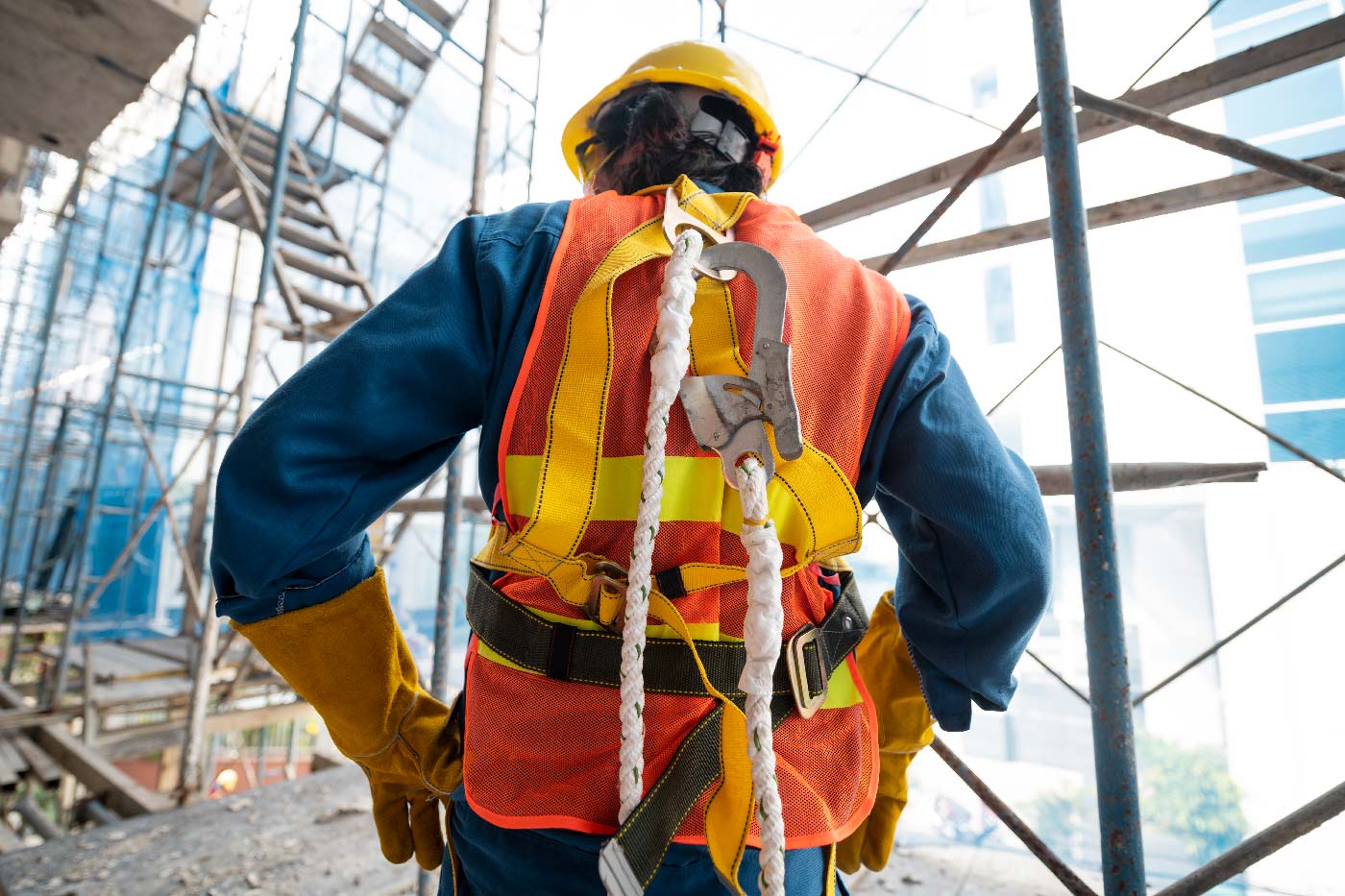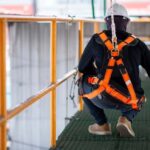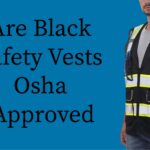To use a safety harness and lanyard, first, put on the harness properly, ensuring all straps are securely fastened. Next, connect the lanyard to the harness’s D-ring, making sure it is snug and reliable.
A safety harness and lanyard are essential personal protective equipment (PPE) used in various industries to prevent falls and ensure worker safety. They are particularly crucial when working at heights or in situations where there is a risk of falling.
By properly using a safety harness and lanyard, individuals can greatly reduce the chances of injuries or fatalities in the workplace. We will provide a step-by-step guide on how to use a safety harness and lanyard effectively, ensuring maximum protection and adherence to safety regulations.
Read More: Are Black Safety Vests OSHA Approved
What Is A Lanyard On A Safety Harness?
A lanyard on a safety harness is an essential component that connects the harness to an anchor point. It ensures safety while working at heights by preventing falls and providing stability and support. Proper usage of a safety harness and lanyard is crucial for maintaining a secure and protected working environment.
What Is A Lanyard On A Safety Harness?
A lanyard is an essential component of a safety harness that ensures workers are securely attached to an anchor point. It plays a crucial role in protecting individuals who work at heights or in potentially dangerous environments. Let’s delve deeper into what a lanyard is and how it functions:
- Shock-absorbing feature: A lanyard typically incorporates a shock-absorbing mechanism that helps reduce the impact of a fall. This feature minimizes the risk of severe injuries by absorbing and dissipating the energy generated during a fall.
- Connection point: The lanyard attaches to the safety harness at one end and connects to an anchor point or a lifeline at the other. It creates a secure link between the worker and the structure, ensuring stability and preventing accidental falls.
- Types of lanyards: There are different types of lanyards available, designed to suit various working conditions and environments. Some common ones include:
- Webbing lanyards: These lanyards are made of strong and durable webbing material. They are suitable for general-purpose fall protection and offer excellent resistance to abrasion.
- Energy-absorbing lanyards: These lanyards are equipped with a shock-absorbing element, such as a tearable webbing or an energy-absorbing pack. They are ideal for situations where there is a risk of a free fall.
- Restraint lanyards: Restraint lanyards prevent workers from reaching areas where a fall may occur. They physically restrict movement and allow individuals to work safely within a designated area.
- Length and adjustability: Lanyards come in various lengths, allowing workers to choose the appropriate size based on their specific requirements. Some lanyards also have adjustable features, enabling users to customize the length to suit their needs.
- Safety standards: To ensure the utmost safety, it is crucial to use lanyards that comply with relevant safety standards. Look for lanyards that meet the standards set forth by regulatory bodies such as the Occupational Safety and Health Administration (OSHA) or the American National Standards Institute (ANSI).
By understanding what a lanyard is and its importance in conjunction with a safety harness, workers can enhance their safety while working at heights or in hazardous conditions. Remember to select the right type of lanyard based on the work environment and adhere to safety guidelines to minimize risks and prevent accidents.
Learn More: How Often Should You Replace Work Shoes
What Is The Difference Between Harness And Lanyard?
A safety harness and lanyard serve different purposes. A harness is designed to distribute the force of a fall and protect the wearer, while a lanyard is a tether that connects the wearer to a secure anchor point. Proper usage of both is essential for a safe working environment.
Using Safety Harness And Lanyard can be a lifesaver in potentially dangerous situations. However, it’s crucial to understand the difference between a harness and a lanyard to ensure proper usage and maximum safety. In this section, we will explore the dissimilarities between the two, helping you make an informed decision while working at heights.
Harness Vs. Lanyard: Knowing The Key Differences
When it comes to working at heights, understanding the fundamental dissimilarities between a safety harness and a lanyard is essential. Let’s dive into the key differences:
Bullet points:
- Harness:
- A safety harness is a complete body support system designed to distribute the impact of a fall across the entire body.
- It consists of straps that encircle the chest, waist, and thighs, securing the wearer in place during a fall.
- The shoulder straps play a significant role in minimizing the force exerted on the upper body during sudden stops.
- Lanyard:
- A lanyard is an adjustable strap that connects the body harness to an anchorage point or lifeline.
- It acts as a link between the user and the safety system, allowing limited freedom of movement while preventing falls from heights.
- Lanyards are available in different types, including shock-absorbing lanyards that reduce the impact of a fall.
Understanding the differences between a safety harness and a lanyard is crucial for selecting the appropriate equipment for different heights and situations. So, whether you’re working on a construction site, climbing a ladder, or participating in recreational activities, being aware of these distinctions will help you stay safe.
Read More About: How To Clean Steel Toe Boots
How To Properly Use A Safety Harness?
Discover the proper use of a safety harness and lanyard with these easy-to-follow steps. Ensure your safety at heights by understanding the correct way to wear and secure the harness for maximum protection.
How To Properly Use A Safety Harness?
A safety harness is an essential piece of equipment when it comes to working at heights or in situations where there is a risk of falling. However, it is crucial to know how to use a safety harness correctly to ensure maximum safety and protection.
Here are some guidelines to follow when using a safety harness:
Choose The Right Size And Type Of Safety Harness:
- Select a safety harness that fits you properly. It should be neither too tight nor too loose.
- Ensure that the harness is designed for the specific task you will be performing. Different harnesses are designed for different industries and work environments.
Inspect The Harness Before Use:
- Before putting on the safety harness, inspect it for any signs of wear and tear, such as frayed webbing or damaged hardware.
- Check all buckles, D-rings, and other connection points to make sure they are functioning correctly.
Put On The Safety Harness Correctly:
- Start by loosening all the straps on the harness.
- Put your arms through the shoulder straps and position the chest strap at the level of your chest.
- Fasten the waist belt securely around your waist, ensuring that it is snug but not overly tight.
- Adjust the leg straps so that they fit comfortably without restricting movement.
Connect The Lanyard Properly:
- Attach the lanyard to the designated D-ring on the back of the safety harness.
- Use a self-locking carabiner to connect the lanyard to the anchor point.
- Double-check that the connection is secure and that there is no slack in the lanyard.
Perform Regular Safety Checks:
- Once you have your safety harness on, perform a final inspection to ensure that everything is properly secured and adjusted.
- Make sure all straps are tightened and that there are no twisted or tangled parts.
- Check that the D-rings and buckles are fully closed and engaged.
Use A Fall Arrest System:
- When wearing a safety harness, always use a fall arrest system in conjunction with it. This system may include a shock-absorbing lanyard, a rope grab, or a retractable lifeline.
- The fall arrest system is designed to minimize the impact forces during a fall and keep you safe.
Never Override Safety Procedures:
- It is crucial to follow established safety procedures at all times.
- Do not tamper with any part of the safety harness or try to modify it in any way.
- If you have any doubts about the safety of your harness or equipment, consult a safety professional before use.
By following these guidelines and using a safety harness correctly, you can ensure that you are maximizing your safety while working at heights or in potentially dangerous situations. Remember, proper training, regular inspections, and adherence to safety protocols are essential for the effective use of a safety harness.
Stay safe!
Learn More About: Is Composite Toe the Same As Steel Toe?
When Do You Need To Wear A Safety Harness?
Wearing a safety harness is essential in high-risk situations where falling may occur. By properly using a safety harness and lanyard, you can ensure your safety and prevent accidents when working at heights.
Wearing a safety harness is crucial in many situations where there is a risk of falling or injury. Whether you work at heights, engage in extreme sports activities, or simply want to ensure personal safety during specific tasks, understanding when to wear a safety harness is essential.
Here are some situations where wearing a safety harness is necessary:
- Construction and Maintenance Work:
- Working on roofs or high platforms: A safety harness should be worn when working on elevated surfaces to prevent falls.
- Tree trimming or maintenance: When climbing trees or working at heights, a safety harness provides necessary protection against falls.
- Building and bridge construction: In these environments, a safety harness is a mandatory safety precaution to prevent accidents.
- Industrial Jobs:
- Working on scaffolding: When working on scaffolding at any height, wearing a safety harness is crucial to prevent falls.
- Avoiding equipment or machinery falls: In industrial settings, a safety harness can protect against injuries caused by falling objects.
- Recreational Activities:
- Rock climbing and mountaineering: Wearing a safety harness is essential during these activities to ensure protection if a fall occurs.
- Zip-lining and bungee jumping: These thrilling adventures require the use of a safety harness to maintain safety throughout.
- Emergency and Rescue Situations:
- Firefighting and emergency response: First responders and firefighters use safety harnesses as part of their protective gear in potentially hazardous situations.
- Search and rescue operations: In situations where rescuers need to reach remote or hard-to-access areas, wearing a safety harness is necessary.
Remember, these are just a few examples where wearing a safety harness is vital. Always assess the risks beforehand and prioritize personal safety. Never compromise on safety measures, as they can save lives and prevent serious injuries. Stay safe and secure with a reliable safety harness and lanyard.
Read More About:
- How Often Should You Replace Work Shoes
- Are Composite Toe Boots OSHA Approved
- Do Soldiers Use Ear Protection
- Should Babies Wear Ear Protection On Planes
What Is The Required Height When Using Safety Harness?
The required height for using a safety harness is determined by the specific regulations and safety standards for the industry or activity being performed. It is crucial to follow these guidelines to ensure proper protection and prevent accidents or injuries.
Understanding The Required Height When Using A Safety Harness
Overview
Using a safety harness is crucial when working at heights to prevent accidents and protect lives. But how do you determine the required height when using a safety harness? Let’s delve into the specifics to ensure you have a firm grasp on this essential information.
Factors To Consider
When determining the required height for using a safety harness, several factors come into play. Here are the key considerations:
- Type of work: The nature of the task being performed is vital. Whether it involves construction, window cleaning, or maintenance, understanding the specific work requirements is crucial in determining the required height.
- Safety regulations: Different regions and industries may have their own safety regulations and guidelines. It’s imperative to familiarize yourself with the applicable regulations to ensure compliance.
- Fall distance: The fall distance refers to the vertical distance between the anchor point and the lower level where the worker could potentially fall. It is vital to consider this distance to determine the required height for using a safety harness effectively.
- Equipment specifications: Manufacturers provide specifications regarding the maximum safe working height for their safety harnesses and lanyards. Always refer to these guidelines when determining the required height.
- Risk assessment: Conducting a comprehensive risk assessment is essential. This will help identify potential hazards, assess the risks involved, and determine the appropriate height at which to use the safety harness.
Steps To Determine The Required Height
To determine the required height when using a safety harness, follow these steps:
- Identify the task: Clearly understand the nature of the work being carried out.
- Assess the fall risk: Identify areas where workers could be at risk of falling, considering factors such as elevation, edges, and potential trip hazards.
- Calculate the fall distance: Measure the vertical distance from the anchor point to the lower level where a fall could occur. This will assist in specifying the required height.
- Review safety regulations: Familiarize yourself with the safety regulations and guidelines specific to your region and industry to ensure compliance.
- Consult equipment specifications: Refer to the manufacturer’s instructions for the safety harness and lanyard you are using to determine the maximum safe working height.
- Perform a risk assessment: Conduct a thorough risk assessment to identify any additional height-related hazards that may require specific safety measures.
Determining the required height when using a safety harness is crucial for ensuring worker safety. By considering factors such as the type of work, safety regulations, fall distance, equipment specifications, and conducting a risk assessment, you can ensure that the safety harness is used effectively and prevent accidents in elevated work scenarios.
Always prioritize safety and adhere to the necessary precautions to ensure a secure working environment. Stay protected and work with confidence!
Types Of Safety Harnesses And Lanyards
Discover the various types of safety harnesses and lanyards and learn how to effectively use them for maximum protection and safety in hazardous work environments. This comprehensive guide provides valuable insights and tips for utilizing safety harnesses and lanyards to ensure a secure and accident-free workplace.
Safety harnesses and lanyards are essential tools for anyone working at heights or in potentially dangerous environments. They provide a sense of security by preventing falls and protecting workers from serious injuries. There are different types of safety harnesses and lanyards available, each designed for specific purposes.
In this section, we will explore the various types of safety harnesses and lanyards and their features.
Full-Body Harness:
- Full-body harnesses are the most common type of safety harness used in various industries.
- They are designed to distribute the force of a fall across the user’s body, minimizing the risk of injury.
- These harnesses come with shoulder straps, leg straps, and a waist belt to provide maximum support and stability.
- Full-body harnesses are suitable for workers who need to perform tasks at heights for extended periods.
Construction Harness:
- Construction harnesses are specifically designed for construction workers, offering additional features tailored to their needs.
- They often come with extra padding and support in areas that are prone to strain, such as the back and shoulders.
- Construction harnesses also have additional attachment points for tools and accessories, allowing workers to have everything they need within reach.
Suspension Harness:
- Suspension harnesses are primarily used for work involving long durations of suspension.
- They feature additional padding and support in the thighs and buttocks area to increase user comfort during extended suspension.
- Suspension harnesses are commonly used by window washers, painters, and workers in the telecommunications industry.
Rescue Harness:
- Rescue harnesses are designed with special features to facilitate the rescue of workers in emergency situations.
- They often have built-in attachment points for connecting rescue equipment, such as ropes or cables.
- Rescue harnesses also have additional padding and support to ensure the comfort and safety of both the worker and the rescuer.
In addition to safety harnesses, lanyards are equally important in fall protection systems. Lanyards are connecting devices that attach the safety harness to anchor points or lifelines. Here are some types of lanyards commonly used:
Shock-Absorbing Lanyard:
- Shock-absorbing lanyards are designed to reduce the impact on the body during a fall by absorbing and dissipating energy.
- They feature an integrated shock pack that works like a coiled spring, slowing down the fall and reducing the force exerted on the user’s body.
Self-Retracting Lanyard (SRL):
- Self-retracting lanyards use a mechanism similar to a seatbelt to retract the lanyard webbing automatically.
- They offer greater mobility and convenience compared to traditional lanyards.
- SRLs are ideal for workers who need to move around frequently, as they automatically adjust the length of the lanyard.
Adjustable Lanyard:
- Adjustable lanyards allow the user to adjust the length of the lanyard to suit the working environment.
- They provide flexibility and versatility, as they can be easily adjusted to accommodate different tasks and situations.
- Adjustable lanyards are commonly used in industries where workers need to move between different work areas.
Remember, choosing the right type of safety harness and lanyard depends on the specific job requirements and the level of protection needed. It is crucial to conduct a thorough risk assessment and select the appropriate equipment to ensure the safety and well-being of workers at all times.
Frequently Asked Questions Of How To Use Safety Harness And Lanyard
How Do You Attach A Lanyard To A Harness?
To attach a lanyard to a harness, simply locate the attachment point on the front or back of the harness and secure the lanyard to it.
How Does A Harness And Lanyard Work?
A harness and lanyard secure you and prevent falls while working at heights. The harness fits around your body and the lanyard connects to an anchor point.
How Do You Wear A Safety Harness Step By Step?
To wear a safety harness step by step, follow these guidelines: 1. Put on the harness by sliding the straps over your shoulders. 2. Connect the chest and waist straps securely, making sure they are snug but not too tight. 3.
Adjust the leg straps and ensure they fit comfortably without restricting movement. 4. Double-check that all connections are secured and properly fastened before using the safety harness.
How Do You Use A Fall Protection Lanyard?
To use a fall protection lanyard, simply attach one end to your harness and the other end to a secure anchor point.
Conclusion
Using a safety harness and lanyard is crucial for ensuring your safety in various industries and activities. By following the correct procedures and guidelines, you can minimize the risk of falls or injuries. Remember to inspect your equipment regularly for any signs of wear and tear and replace it if necessary.
Always choose the right harness and lanyard for the specific task and ensure they are properly adjusted to fit your body. Additionally, make sure you are trained on how to properly use the equipment and understand the importance of anchorage points.
By utilizing a safety harness and lanyard correctly, you are taking the necessary steps to protect yourself and prevent accidents. Prioritize safety in your workplace or any elevated activities, and let your safety harness and lanyard be your reliable companions.
Stay safe out there!
















